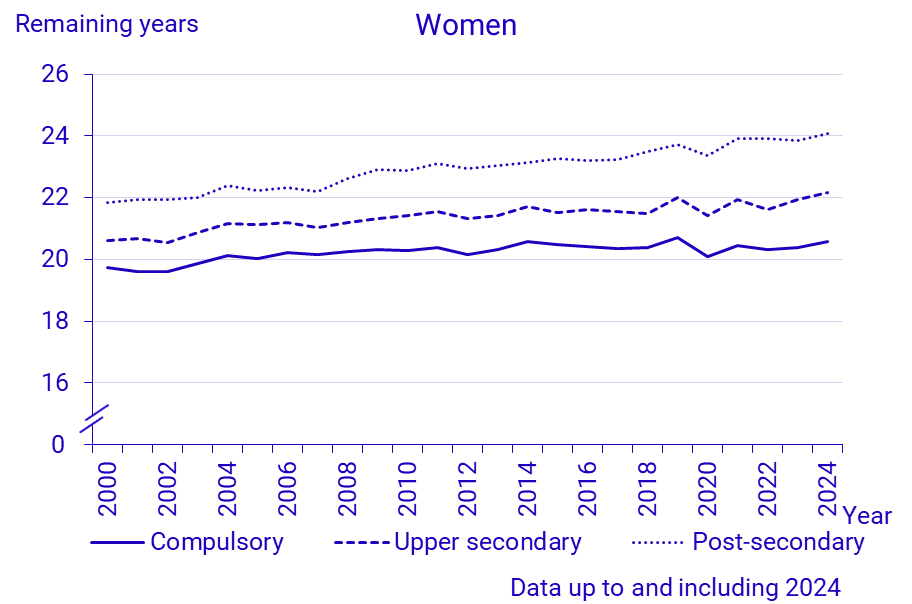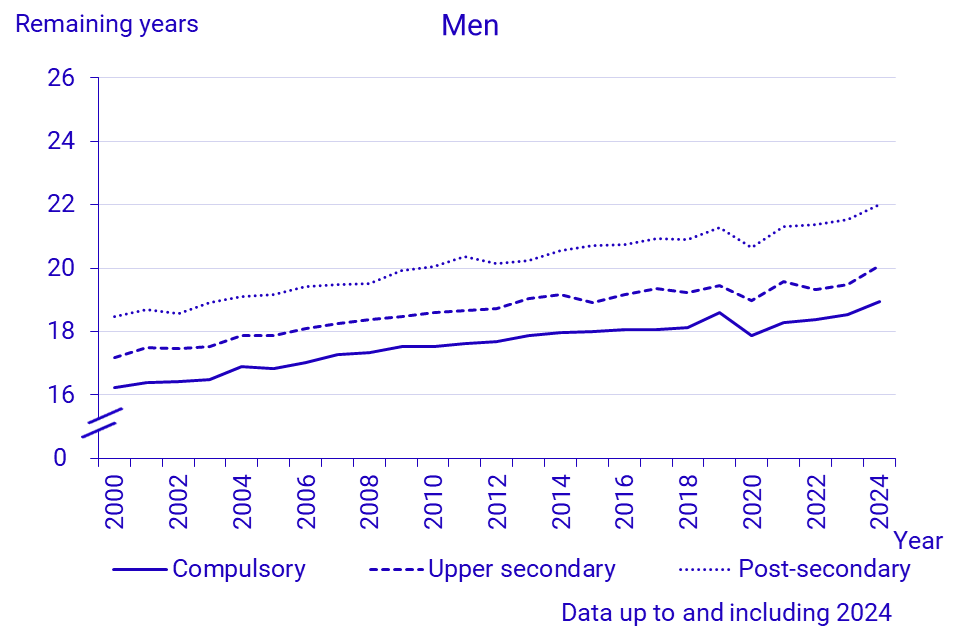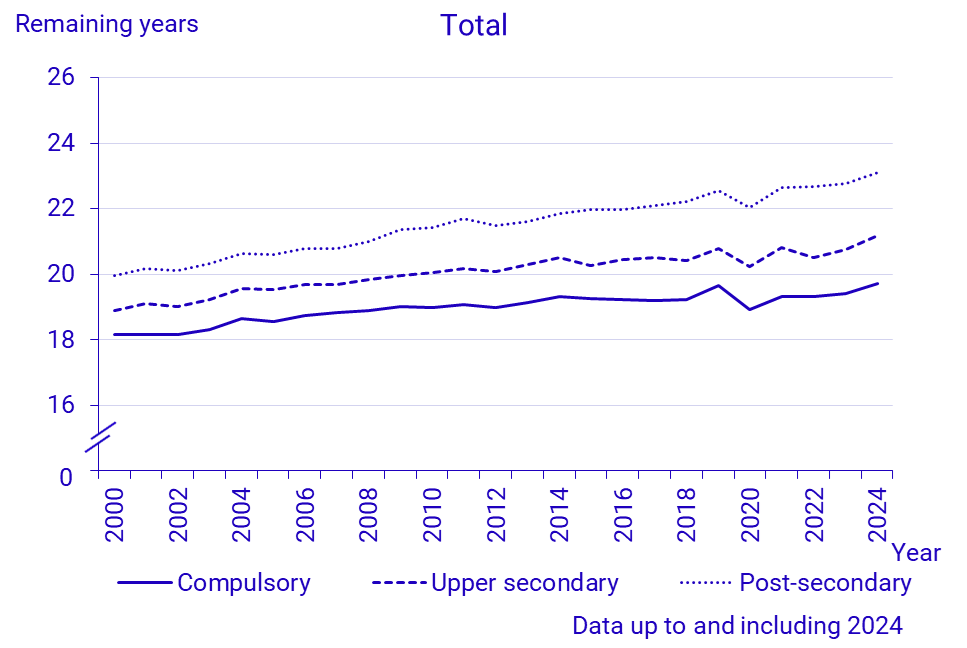Life expectancy at age 65 by educational attainement 2000-2024



Comments
Life expectancy has increased significantly among older women and men during the period 2000–2024. The number of remaining years has risen for everyone, regardless of education level, but clear differences exist between educational groups. Throughout the 2000 decade, the remaining life expectancy at age 65 has been highest for those with post-secondary education and lowest for those with primary education, and the differences based on education level have widened.
Among women with primary education, life expectancy increased less during the 2000 decade than in any other educational group, regardless of gender. The group's life expectancy followed an upward but increasingly uneven trend until 2019, with some periods of noticeable decline. Following the covid-19 outbreak, life expectancy fell in 2020 from 20.7 to 20.1 years. In 2024, the group's life expectancy was 20.6 years, slightly lower than in 2019.
For women with secondary education, life expectancy increased until 2019 in a similar pattern to women with primary education, but with a less pronounced slowdown after 2010 and a faster increase after 2020. Women with post-secondary education experienced a rather steady increase in life expectancy over the whole period. In both groups, life expectancy in 2024 had exceeded the level seen in 2019. Since 2000, the gap in life expectancy between women with primary and post-secondary education has grown by approximately 1.4 years, from 2.1 to 3.5 years.
Life expectancy has increased more during the 2000 decade for men than for women, regardless of education level. During 2000–2024, life expectancy for men with primary education increased by 2.7 years, which was more than the increase seen among women with post-secondary education over the same period. For men with secondary and post-secondary education, life expectancy rose by 2.9 and 3.5 years, respectively. The gap between men with primary and post-secondary education widened by 0.8 years during the period, growing from 2.2 to 3 years. Thus, the differences in life expectancy between educational groups have increased slower for men than for women.
This report presents remaining life expectancy by education level for individuals born in Sweden. Results for foreign-born individuals can be found in the Statistical Database. Life expectancy calculations include adjustments for mortality risks at older ages: 90 years and older in 2000–2009, and 99 years and older in 2010–2011. The 2000–2011 adjustment ensures that all education groups are assigned the same mortality risk as native-born women and men nationwide from the respective older age thresholds. For individuals born before 1911, education data is unavailable, and certain adjustments have been made for mortality risks at the oldest ages in 2012 and earlier.